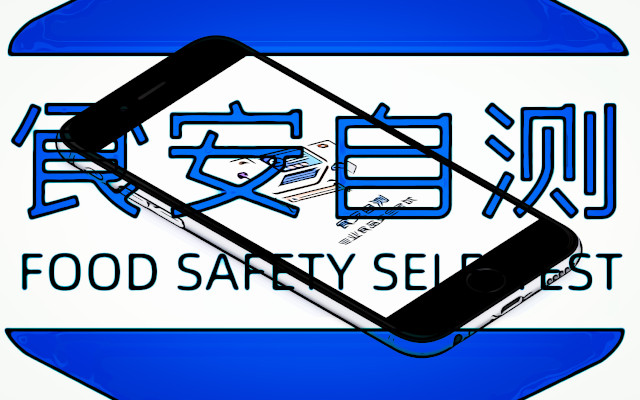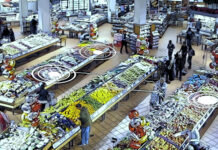Digitization is one of the key-words in any program to boost and support the economy after the Covid-19 crisis. Starting with the #NextGenerationEU (former Recovery Plan), which complements the long-term EU budget 2021-2027. (1)
The Chinese vanguard integrates-through apps and social networks-the tools to ensure safety and traceability with those for food information and interaction with users, B2B(business to business) and B2C(business to consumers).
Digitalization in the food industry
Emerging digital applications in the food supply chain first involve precision agriculture and public blockchain systems. (2) The latter, as noted, is a system for guaranteeing the authenticity of data entered into an incorruptible digital database. It can be developed in a progressive and modular approach by recording data concerning:
– FOOD SAFETY. Mandatory permits and certifications, traceability of material flows of goods,
– quality. Process and product requirements, certifications and audits, analysis,
– Environmental sustainability and animal welfare,
– social sustainability. Workers’ rights and dignity, transparency on the value chain,
– identity and distinctive features. Geolocation of land and facilities but also history and traditions, innovation, relationships with the land, modus operandi. (3) Video material can also be made accessible through a QR-code, even better by applying the GS1 Digital Link standard. (4)
Chinese Vanguard
More than 1.439 billion people, or 18.7 percent of the world’s population, reside in China (UN, 2020). Which today expresses 20 percent of the global middle class. And it will reach 25 percent of the global middle class by 2027, thanks to 7.5 million new jobs created on average each year. Consumption in the People’s Republic of China (PRC) accounts for 7.3 percent of the total (higher than the cumulative U.S., 4.7 percent, and Germany 1.5 percent). (5)
China’s technological vanguard is observed in several areas. Not the least of which is electromedical, as some have come to appreciate in the effective management of the Covid-19 outbreak. But it is especially prevalent among large segments of the population, in the world’s first market for iPhones (which are a minority compared to smartphones made in China). WeChat, the Middle Empire’s social network , records more than 1.2 billion monthly active users. (6)
China, food safety and information via app
Food safety in China has been undergoing structural regulatory reform, starting in 2015. (7) And technological innovation on the Silk Road is helping to ensure even better food safety and food information. Yantai Foodmate Information Technology Co. for example, after building Foodmate Network (one of the first websites dedicated to food safety in China) and Foodmate Forum (an online information exchange community dedicated to food), it has developed an app that interacts with WeChat and offers a wide range of information:
– Producer and product news,
– organoleptic characteristics, socio-environmental impact, peer-to-peer reviews,
– Digital traceability, from farm to fork, including shipping details in case of online sales,
– expiration date, good hygiene practices, storage and preparation methods,
– Conferences, forums and debates on the topic of nutrition,
– Information on market trends,
– Location of local 0-mile markets,
– ecommerce.
Food information and social innovation
Food information is at the same time a social innovation, as it overcomes the historical watertight compartments between different categories of stakeholders. The consumer can thus, thanks to digitization, access news that was historically restricted to business operators and authorities, and vice versa.
A comprehensive, timely and transparent information-sharing model that-all the more so if guaranteed by the ‘digital notary’ of the public blockchain-can help the evolution of the entire system.
Dario Dongo and Elena Bosani
Notes
(1) Dario Dongo, Silvia Giordanengo. EU Budget 2021-2027 and #NextGenerationEU, focus on rural development and CAP financing. GIFT(Great Italian Food Trade). 3.12.20, https://www.greatitalianfoodtrade.it/mercati/bilancio-ue-2021-2027-e-nextgenerationeu-focus-su-sviluppo-rurale-e-finanziamento-della-pac
(2) Dario Dongo, Pier Luigi Romiti. Special Italian Agriculture 4.0. Innovation day, the manifesto and scenario. GIFT (Great Italian Food Trade). 2.6.20, https://www.greatitalianfoodtrade.it/innovazione/speciale-agricoltura-italiana-4-0-innovation-day-il-manifesto-e-lo-scenario
(3) Dario Dongo, Andrea Adelmo Della Penna. Blockchain, the opportunities for the food and organic supply chain. GIFT(Great Italian Food Trade). 1.11.20, https://www.greatitalianfoodtrade.it/innovazione/blockchain-le-opportunità-per-la-filiera-agroalimentare-e-quella-biologica
(4) Dario Dongo, Marina De Nobili. IoT technology and food labels, the new GS1 Digital Link standard. GIFT(Great Italian Food Trade). 11.7.20, https://www.greatitalianfoodtrade.it/mercati/tecnologia-iot-ed-etichette-alimentari-il-nuovo-standard-gs1-digital-link
(5) Homi Kharas, Meagan Dooley (2020). China’s influence on the global middle class. Brookings. Oct. 2020, https://www.brookings.edu/wp-content/uploads/2020/10/FP_20201012_china_middle_class_kharas_dooley.pdf
(6) Lay Lin Tomala. Number of active WeChat messenger accounts Q2 2011-Q3 2020. Statista, 1.12.20, https://www.statista.com/statistics/255778/number-of-active-wechat-messenger-accounts/
(7) For further discussion see theebook ‘Food Safety, Mandatory Rules and Voluntary Standards,’ https://www.greatitalianfoodtrade.it/libri/sicurezza-alimentare-regole-cogenti-e-norme-volontarie-il-nuovo-libro-di-dario-dongo









